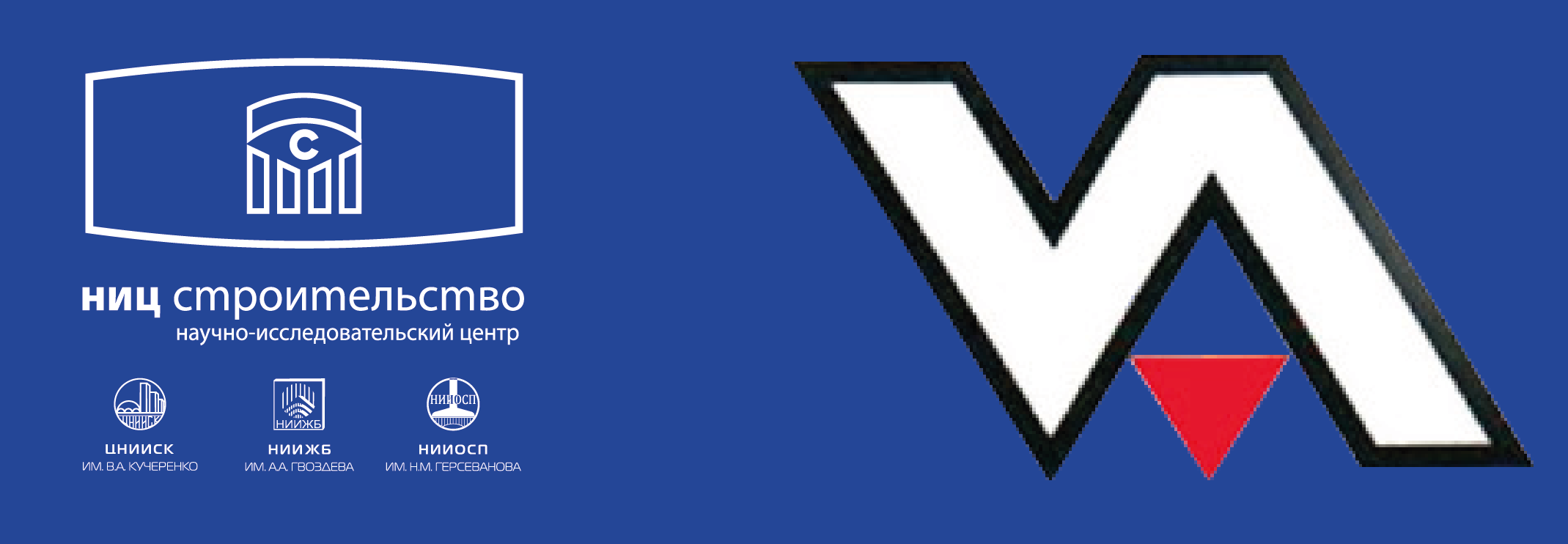Influence of operational loads on the degradation of reinforced concrete of offshore structures
Abstract
Corrosion of reinforcement of marine and coastal hydrotechnical structures due to chloride aggression and carbonation of concrete leads to a sharp decrease in the safety of the structure. The reinforcement is subjected to a depassivation process as soon as the chloride content on its surface exceeds the threshold concentration, or the pH value in the protective layer of concrete decreases to the threshold value as a result of carbonation. When oxygen penetrates to the surface of the reinforcement, electrochemical reactions are realized with the formation of corrosion products. This leads to cracking the protective layer of concrete, reducing the cross-sectional area of the reinforcement. The paper proposes a method for predicting the complex degradation of reinforced concrete structures of coastal structures, taking into account various mechanisms of corrosion wear, which makes it possible to develop effective ways to increase the durability and maintainability of structures operated in the marine environment.
About the Authors
E. E. ShalyiS. N. Leonovich
Belarus
Doctor of Sciences (Engineering), Foreign Academic of RAACS
e-mail: sleonovich@mail.ru
N. A. Budrevich
Belarus
Engineer
References
1. Huang T. The experimental research on the interaction between concrete carbonation and chloride ingress under loading: MSc thesis, Zhejiang University, 2013.
2. Zden k P. Ba ant Physical model for steel corrosion in concrete sea structures-theory. <i>Journal of the Structural Division</i>. 1979. Vol. 105. Iss. 6, pp. 1137–1153. https://doi.org/10.1061/JSDEAG.0005168
3. Andrade C., Prieto M., Tanner P. et al. Testing and modelling chloride penetration into concrete. <i>Construction and Building Materials</i>. 2012. Vol. 39, pp. 9–18. DOI: 10.1016/j.conbuildmat.2012.08.012
4. Apostolopoulos C., Papadakis V. Consequences of steel corrosion on the ductility properties of reinforcement bar. <i>Construction and Building Materials</i>. 2008. Vol. 22. Iss. 12, pp. 2316–2324. https://doi.org/10.1016/j.conbuildmat.2007.10.006
5. Yuan C., Niu D., Luo D. Effect of carbonation on chloride diffusion in fly ash concrete. <i>Disaster Advances</i>. 2012. No. 5 (4), pp. 433–436.
6. Caims J., State of the art report on bond of corroded reinforcement. <i>Tech. report ceb-tg-2/5</i>, 1998.
7. Cao C., Cheung M. Non-uniform rust expansion for chlorideinduced pitting corrosion in RC structures. <i>Construction and Building Materials</i>. 2014. Vol. 51, pp. 75–81. https://doi.org/10.1016/j.conbuildmat.2013.10.042
8. Ho D.W.S., Lewis R.K. Carbonation of concrete and its prediction. <i>Cement and Concrete Research</i>. 1987. Vol. 17. Iss. 3, pp. 489–504. https://doi.org/10.1016/0008-8846(87)90012-3
9. Glass G., Buenfeld N. The influence of chloride binding on the chloride induced. <i>Corrosion Science</i>. 2000. Vol. 42. Iss. 2, pp. 329–344. https://doi.org/10.1016/S0010-938X(99)00083-9
10. Hans B. Corrosion in Reinforced Concrete Structures. Woodhead Publishing Limited, England, 2005.
11. Chindaprasirt P., Rukzon S., Sirivivatnanon V. Effect of carbon dioxide on chloride penetration and chloride ion diffusion coefficient of blended portland cement mortar. <i>Construction and Building Materials.</i> 2008. Vol. 22 (8), pp. 1701–1707. DOI: 10.1016/j.conbuildmat.2007.06.002
12. Rahman M., Al-Kutti W., Shazali M., Baluch M., Simulation of chloride migration in compression-induced damage in concrete. <i>Journal of Materials in Civil Engineering</i>. 2012. Vol. 24. Iss. 7, pp. 789–796. https://doi.org/10.1061/(ASCE)MT.1943-5533.0000458
13. Ozbolt J., Balabanic G., Kuster M. 3D numerical modelling of steel corrosion in concrete structures. <i>Corrosion Science</i>. 2011. Vol. 53. Iss. 12, pp. 4166–4177. https://doi.org/10.1016/j.corsci.2011.08.026
14. Yoon I. Deterioration of concrete due to combined reaction of carbonation and chloride penetration: experimental study. <i>Key Engineering Materials</i>. 2007. Vol. 348–349, pp. 729–732. https://doi.org/10.4028/www.scientific.net/KEM.348-349.729
15. Yoon I. Simple approach to calculate chloride diffusivity of concrete considering carbonation. <i>Computers and Concrete</i>. 2009. Vol. 6. Iss. 1, pp. 1–18. https://doi.org/10.12989/cac.2009.6.1.001
16. Backus J., Mcpolin D., Basheer M. et al. Exposure of mortars to cyclic chloride ingress and carbonation. <i>Advances in Cement Research</i>. 2013. Vol. 25 (1), pp. 3–11. DOI: 10.1680/adcr.12.00029
17. Shalyi E.E., Leonovich S.N., Kim L.V. Degradation of reinforced concrete structures of marine works from the combined impact of carbonation and chloride aggression. <i>Stroitel’nye Materialy</i> [Construction Materials]. 2019. No. 5, pp. 67–72. (In Russian). DOI: https://doi.org/10.31659/0585-430X-2019-770-5-67-72
18. Shaly E.E., Leonovich S.N., Kim L.V., Rumyantseva V.E., Budrevich N.A. Joint action of carbonization and chloride aggression on structural concrete: a probabilistic model. <i>Vestnik grazhdanskikh inzhenerov</i>. 2018. No. 3 (68), pp. 123–131. (In Russian). DOI: 10.23968 / 1999-5571-2018-15-3-123-131
19. Zhu X., Goangseup Z. Combined effect of carbonation and chloride ingress in concrete <i>Construction and Building Materials</i>. 2016. Vol. 110, pp. 369–380. https://doi.org/10.1016/j.conbuildmat.2016.02.034
20. Alekseev S.N., Ivanov F.M., Modry S., Shissl P. [Durability of reinforced concrete in aggressive environments]. Moscow: Stroyizdat, 1990. 320 p.
21. Alekseev S.N., Rozental N.K. Korrozionnaya stoykost’ zhelezobetonnykh konstruktsiy v agressivnoy proizvodstvennoy srede [Corrosion resistance of reinforced concrete structures in an aggressive industrial environment]. Moscow: Stroyizdat, 1976. 205 p.
Review
For citations:
Shalyi E.E., Leonovich S.N., Budrevich N.A. Influence of operational loads on the degradation of reinforced concrete of offshore structures. Concrete and Reinforced Concrete. 2021;606(4):8-13. (In Russ.)












